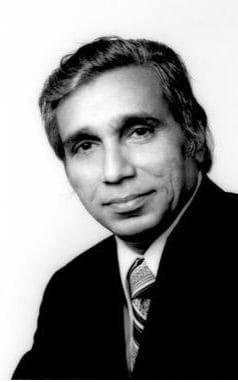In 1931, New York’s Empire State Building became the tallest building in the world and a symbol of America’s place on the world stage after World War II.
Few expected, however, that at 381 metres (1,250 feet) high, it would remain the world’s tallest for more than four decades. After it was completed, the Great Depression hit, followed by World War II and postwar austerity.

Skyscrapers, for all their bombast, were seen as massively inefficient, and anything bigger taller than the Empire State Building was inherently dangerous: the sheer amount of steel required to keep it upright was hardly worth the investment.
That was before Fazlur Rahman Khan came along. A Bangladeshi-born engineer who moved to America, Khan’s “tube” design opened the door for a new generation of skyscrapers that could be built safely and efficiently. His designs have been behind the world’s tallest buildings since the World Trade Center in 1972.
On Monday April 3, Google has commemorated what would have been Khan’s 88th birthday with a Doodle showing Chicago’s famous John Hancock Center, one of his most famous designs.
Khan’s life
Fazlur Rahman Khan was born in 1929 in what is now Dhaka in central Bangladesh, but was then British India. After studying Civil Engineering he won a scholarship to travel to the United States in 1952, where he studied at the University of Illinois in Chicago.
It would be a fortuitous destination, for Chicago is now known for two of Khan’s famous buildings. While he was working at an architectural firm in the city, there was growing concern about where people would live amid urbanisation and a population explosion, but skyscraper designs like the Empire Trade Building, which required huge steel reinforcements to keep them stable, were seen as inefficient.
‘Tube’ design
Khan’s breakthrough was a new design in which a building was not held up by central supports of steel, but by the exterior frame of the building. A series of vertical tubes make up the frame, which creates a suprising rigidity that protects against high wind speeds and earthquakes. It also allows more space inside the building.

The first of Khan’s designs to use the idea was the DeWitt-Chestnut building in Chicago, then Chicago’s famous John Hancock Center in 1968. At the time it was the world’s second tallest building after the Empire State, and was much more efficient to build, using 145kg of steel per square metre compared to the Empire State Building’s 206kg. The tube structure is neatly demonstrated by the John Hancock Center’s visible exterior frame.
Although it wasn’t Khan’s design, the tube structure was used in the World Trade Center, which broke the Empire State Building’s 41-year streak as the world’s tallest building when it was completed in 1972.
Legendary buildings
The World Trade Center only stood as the world’s tallest building for two years before Chicago’s Sears Tower, one of Khan’s designs, overtook it. At 442 metres (1,450 feet) tall, and 108 storeys, it was the world’s tallest building for 24 years.
It remained the tallest structure in the United States until One World Trade Center in 2014, although it was renamed the Willis Tower in 2009.
Khan died in 1982 but his tube structure is still used when making skyscrapers, including those that replaced the Sears Tower as the world’s biggest.
Kuala Lumpur’s Petronas Towers, Taipei’s Taipei 101 and Dubai’s Burj Khalifa all use a version of the tube structure.
Read more: Who was Fazlur Rahman Khan? The genius who made today’s skyscrapers possible
Source: The Telelgraph


Leave a Reply